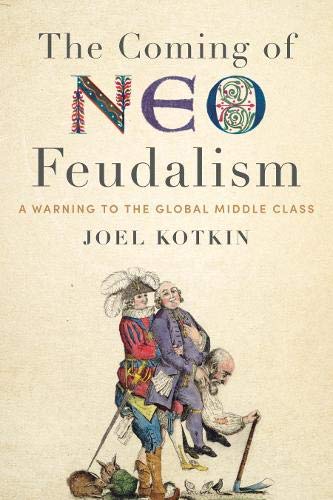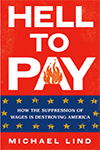Frequent readers here may have seen me write about my experience growing up in 1970s Detroit. I’ve often said that seeking ways to improve the city and not abandon it, is what propelled me into a career in urban planning. I wanted to be a change agent for cities. Today, more than thirty years into my career, I’m proud of the stature cities have gained over that time; I’m proud of my contribution to it. However, I feel as if cities have risen in prominence in spite of the efforts of planners, not because of them. read more »
Urban Issues
A Vision for Cleveland: Part 2
Part 2: Progress and Pain Part 1 is here
Cleveland is demonized because it deindustrialized, largely through no fault of its own. You can add Detroit, Milwaukee, St. Louis, and Pittsburgh to that list. Given that America is a country with fat eyes that looks for big things, the Rust Belt — with its stagnant population and limping job growth — is a blind spot to others when it comes to what’s next. read more »
- Login to post comments
Partnership for New York CIty Poll: Strong Remote Work Future
The Partnership for New York City polled its members in the last month and found that, as of early March, 10% of Manhattan office workers who were working remotely (generally working at home) had returned to the office. This is unchanged from October. The purpose of the survey was to project future shares of working in the office and working at home in the nation’s largest central business district (CBD). read more »
Housing Affordability and the Pandemic
The median price of homes in Auckland, New Zealand’s largest city, grew by $100,000 in February, reports the Real Estate Institute of New Zealand. That means prices were growing by $25,000 a week. The good news is that these are New Zealand dollars, which are only worth about 72 cents U.S., which means prices grew by “only” US$18,000 a week. read more »
The Black Pearl of Atlantic Beach
About a year ago, I got a call from Sonny Matta, one of the founders of Atlantic Beach Redevelopment Public-Private Partnership, introduced me to Atlantic Beach, South Carolina – a 97 acre city along the Atlantic Coast known to locals as The Black Pearl.
The town was formed in the 1930’s as a vacation destination for black families with thriving black-owned businesses. It became an entertainment center African American musicians could not just play, but also stay, which was not an option even in “integrated” cities like Los Angeles. read more »
- Login to post comments
The Death of the American City
When my grandparents migrated to New York from Russia over a century ago, they found a city that was hardly paradise, but one that provided a pathway towards a better life. Life was tough, crowded and always a paycheck from poverty. My relatives were poor, but so was everyone; eventually, they all bought houses or apartments, and entered the middle class. read more »
- Login to post comments
A Vision for Cleveland
Part 1: Innovation and “the Next Silicon Valley”
It’s mayoral season in Cleveland and a number of viable candidates are lining up. With political candidacies inevitably comes political agendas. We will hear a lot about what a given candidate thinks has or hasn’t worked in Cleveland. We will also hear prognosticating about the future of Cleveland. read more »
- Login to post comments
Battlefield 'Burbs
America’s political culture has been shaped by its rural and urban environments, each of which tends to be dominated by one party. Urban Republicans are now as rare as rural Democrats.
Yet the political future of the country lies in the suburban and exurban rings that dominate every metropolitan region. These voters are made up predominately neither of woke city hipsters nor gun-toting rubes, the stereotypes that dominate our competing cultural memes. The suburbs are the last contestable geography in the country. read more »
Reasons People Are Moving From Los Angeles to Dallas — More Important Than Escaping Higher Taxes
Californians escaping high taxes dominate the real estate news. Yes it is true, leaving California because of high city, county and state income tax for Dallas and Texas, with no income tax, is a motivation, but last on my list of seven reasons why people are moving from Los Angeles to Dallas. People will pay more to live where they like living, whether that means higher taxes, higher home prices or higher cost of living. People will leave a place they do not enjoy if they can afford to. This is the case with Angelenos. Residents have found Los Angeles increasingly unpleasant. read more »
Why More Americans Should Leave Home and Move to Other States
America has been lazily divided by pundits into red and blue states, as if there weren’t constant movement of people between them. Fortunately, reality is a lot more purple — and hopeful — as immigrants, people of color and millennials reshape parts of America by voting with their feet and moving.
These demographic groups are migrating from the big coastal cities to the suburbs, the interior cities, the South and even parts of the Midwest. And in the process, these newcomers change both their new homes and are also changed by them. read more »
- Login to post comments






















